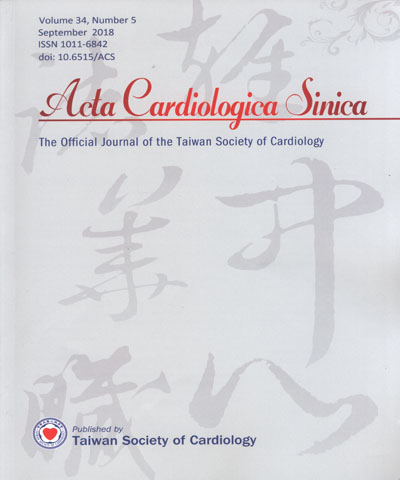
Acta Cardiologica Sinica
中華民國心臟學會,正常發行
選擇卷期
- 期刊
Background: To investigate the left atrial (LA) size as an independent predictor of mortality following coronary artery bypass surgery (CABG). Methods: This single center study evaluated determinants of mortality in 1070 patients who underwent isolated CABG from 2005-2014. Clinical, laboratory and demographic data were obtained from medical records. Collinearity between enlarged LA size (diameter ≥ 4 cm) and covariates was identified. The adjusted effects of enlarged LA size on 30-day mortality post CABG were tested using multiple logistic regression models. Adjusted odds ratios (OR) and 95% confidence intervals (CI) were reported. Results: The mean age was 59 ± 9.8 years, and 238 patients were female. Two multivariate logistic regression models were evaluated. In Model A, mitral regurgitation (MR), ejection fraction, intensive care unit length-of-stay and variables found to be collinear with LA size as predictors of mortality were excluded. In model B, the collinear variables were included. By multivariate analysis (Model A), the statistically significant independent predictors of 30-day mortality after CABG were: enlarged LA size (OR 4.82, 95% CI 2.16-10.79), emergency CABG (OR 3.54, 95% CI 1.75-7.18), prolonged inotropic support (OR 2.79, 95% CI 1.38-5.6), diuretic use ≥ 1 month (OR 1.29, 95% CI 1.3-8.42), and use of clopidogrel within a week before surgery (OR 3.27, 95% CI 1.28-8.36. In Model B, enlarged LA and moderate MR were identified as independent predictors of 30-day mortality. Conclusions: Increased LA size is a strong independent predictor of mortality after isolated CABG.
- 期刊
A 53-year-old male with an invasive thymoma extending to the superior vena and right atrium, presenting as superior vena cava syndrome is herein reported. However invasive thymoma with this growth pattern is extremely rare. In this case, the tumor was successfully resected via median sternotomy with cardiopulmonary bypass. After 17 months of follow-up, the patient was still free from any signs and symptoms indicative of superior vena cava syndrome, but recurrent tumor in the right pleura was observed on the follow-up chest computed tomography.

